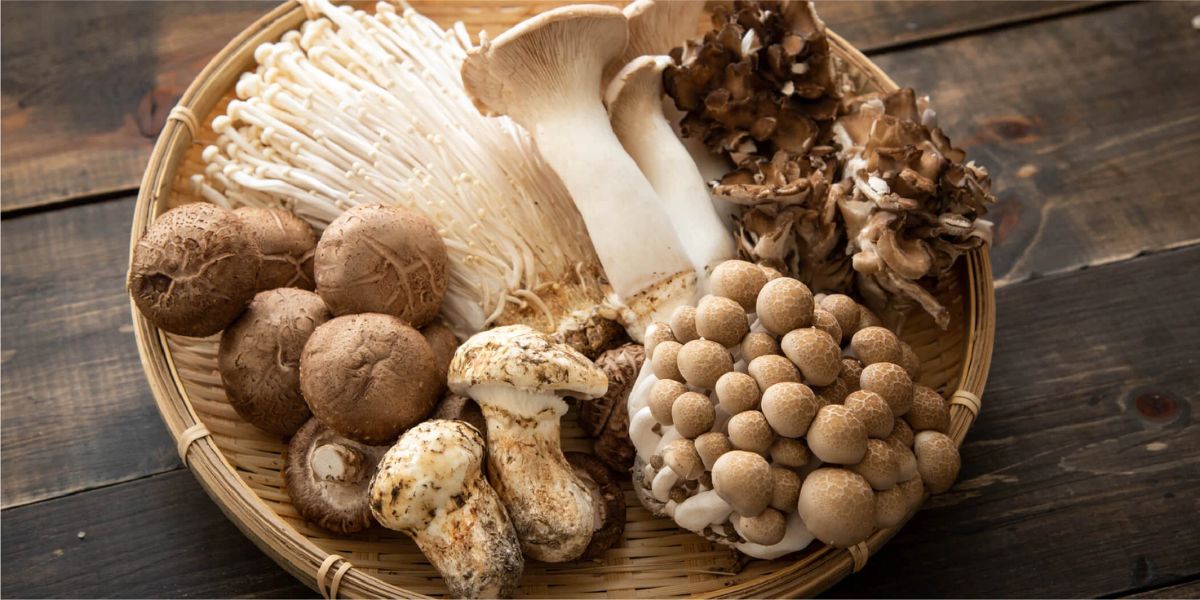Washington State’s diverse ecosystems—from lush coastal rainforests to dry eastern plateaus—offer a rich tapestry for mushroom foraging. Whether you’re a seasoned mycophile or a curious beginner, the Evergreen State boasts a variety of edible fungi that are both delicious and relatively easy to identify.
Here are six standout mushrooms that Washingtonians cherish.
1. Pacific Golden Chanterelle (Cantharellus formosus)
The Pacific golden chanterelle is a favorite among foragers and chefs alike. Recognizable by its vibrant yellow to orange, vase-like cap and decurrent ridges (often mistaken for gills), this mushroom emits a sweet, apricot-like aroma. It thrives in coniferous forests, particularly under Douglas firs and hemlocks, from late summer through fall. Its firm texture and mild, nutty flavor make it a versatile addition to various dishes.
2. Morel (Morchella spp.)
Morels are among the most sought-after wild mushrooms in Washington. Their distinctive honeycomb-patterned caps and hollow interiors set them apart. They typically appear in spring, especially after wildfires or in disturbed soils. Morels have a meaty, earthy flavor and are often sautéed or incorporated into sauces. However, it’s crucial to note that morels should always be cooked thoroughly, as consuming them raw can be toxic.
3. King Bolete (Boletus edulis)
Also known as porcini, the king bolete is a prized mushroom with a thick, brown cap and a white, spongy underside. It has a rich, nutty flavor and a firm texture, making it ideal for drying, sautéing, or adding to soups. While the king bolete is generally safe, it’s essential to ensure proper identification, as some toxic species resemble it.
4. Oyster Mushroom (Pleurotus ostreatus)
Oyster mushrooms are easily recognizable by their oyster-shaped caps and white to pale gray color. They often grow on decaying wood, particularly hardwoods like alder. These mushrooms have a mild, anise-like flavor and a delicate texture. They’re versatile in cooking, suitable for stir-fries, soups, and as a meat substitute in various dishes.
5. Lion’s Mane (Hericium erinaceus)
Lion’s mane is a unique mushroom with cascading white spines resembling a lion’s mane. It grows on hardwood trees and has a seafood-like flavor, often compared to crab or lobster. Beyond its culinary appeal, lion’s mane is also valued for its potential cognitive and nerve-regenerative benefits.
6. Chicken-of-the-Woods (Laetiporus sulphureus)
This striking mushroom features bright orange to yellow shelf-like clusters on decaying hardwoods. Its texture and flavor resemble chicken, making it a popular meat substitute in vegetarian dishes. However, some individuals may experience digestive issues when consuming it, especially specimens growing on cedar. It’s advisable to test a small amount first and avoid consuming it raw.
Foraging Tips and Safety
- Proper Identification: Always consult a reliable field guide or an experienced forager before consuming any wild mushroom.
- Harvesting Techniques: Use a knife to cut mushrooms at the base, leaving the root system intact to promote future growth.
- Cooking: Never eat wild mushrooms raw. Cooking them thoroughly ensures safety and enhances flavor.
- Local Regulations: Check with local authorities regarding foraging rules and regulations, as some areas may have restrictions.
Washington’s rich fungal diversity offers a rewarding experience for those interested in mushroom foraging. By focusing on these six edible species, foragers can enjoy both the thrill of discovery and the pleasure of culinary delights.
This article was written by John Deluca. AI was used lightly for grammar and formatting, but the ideas, words, and edits are all mine.












